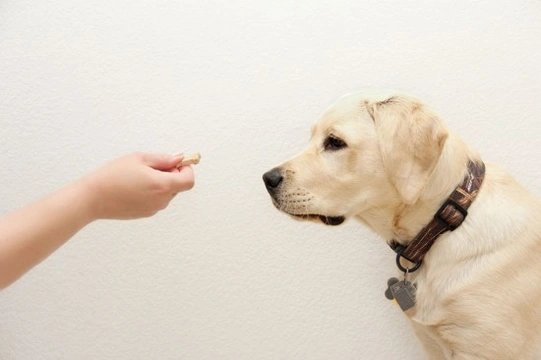
Four simple steps for getting your dog’s attention
If you are sick of frantically calling and yelling at your dog as they disappear off over the horizon, or can’t seem to get your dog’s attention and recall them when they are playing or something else is on their mind, this can be extremely frustrating!
Not only that, but it can potentially be dangerous for your dog and possibly other people and animals too if your dog runs out into the road or pursues another animal and refuses to respond to his name.
In order to get your dog to do anything that you want or need them to do, and to be able to both trust them off the lead and control them when on the lead, you need to ensure that your dog knows his name, and that you can use it to get his attention. This might seem like ‘dog training 101’ to many people, but then, those people are probably lucky enough to get a dog that already knew and was responsive to their name when they got him, or to have got a dog or puppy that was highly amenable to training! Anyone who has ever owned an unruly dog, one who seemed to suffer from selective deafness when it came to calling their name or getting their attention, and anyone whose dog seems to lose their desire to listen when a game is afoot, however, will know exactly where you are coming from.
If you are having problems getting your dog’s attention, getting them to respond to their name or to react and obey when you call it, don’t despair. Read on to learn more about getting your dog’s attention- and keeping it.
First pick a good name!
Before your dog can hope to have a chance of responding to his name and coming when called, first of all you will need to make sure that he knows what his name is! Short one or two syllable names with clear plosive sounds and that do not sound similar to other commonly used words are a sensible pick. If your dog already has a long, complicated-sounding name, then shorten it down into an everyday name that you can consistently use to address your dog.
Gaining and keeping eye contact and attention
The first stage in getting your dog’s attention is getting them to look at you in the first place. Keep a pocket full of treats to work through this stage, and be prepared to work on it daily until the message has sunk in.
This attention-gaining activity works best on the move- if you are moving at the same time as you speak the dog’s name, your movement will hold the dog’s attention much more than it will if you are standing still and offering no visual diversion. Speak the dog’s name loudly and clearly, make eye contact with them when they look at you, and as this occurs, begin to move away from your dog relatively briskly.
As soon as the dog gets up and moves to follow you, praise and offer the treat. If you are attempting to train your dog using clicker training or another form of operant conditioning, this is the stage at which you would ‘click.’ When you give the treat, give it calmly and make sure your dog follows your line of sight so that he has to make eye contact with you to receive it; eye contact is an important part of gaining your dog’s attention and getting him to follow your commands.
In time, you will find your dog looking to you for eye contact and the associated treat, and it is important to reward this while your dog is still getting used to paying attention. In time, phase out the treats for a word of praise or a favourite toy.
Four simple steps
This simple four-step process as described above in detail:
- Say the name
- Make eye contact and move away
- Praise
- Give the treat
Can be highly effective at getting your dog to respond and come immediately when you use his name. But more than this, it can also help to ensure that when out walking off the lead, your dog will continually look back at you at regular intervals, meaning that your dog is marking your location and keeping you in sight, rather than that you are doing this for him.
In order to make this training method effective, repetition is the key. Repeating the process a few times either once or twice a day until your dog complies or responds reliably is vital, and even when your dog is appropriately trained, remember to continue to praise for compliance and good behaviour to reinforce the message.
Getting your dog to pay attention and respond when called only takes a few minutes of practice each day, and you can do it in the house as well as when out walking; in fact, using the home or garden during the initial stages can be a better idea, as there will be less stimulus around to confuse your dog. Good luck!



